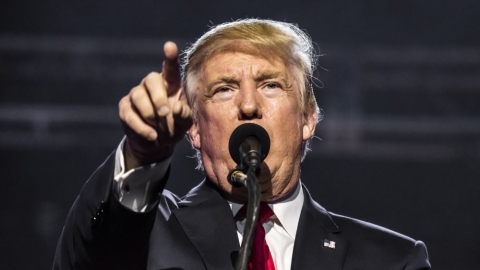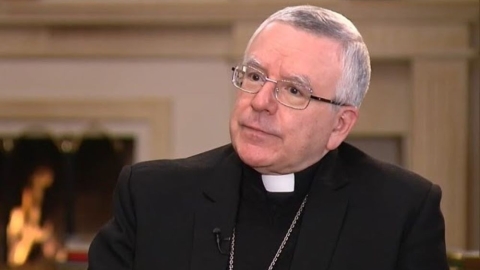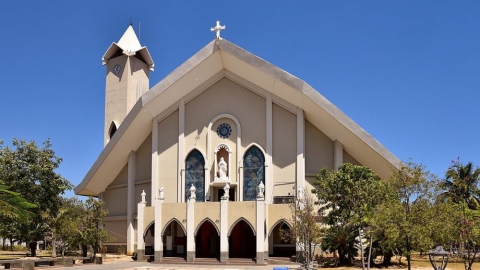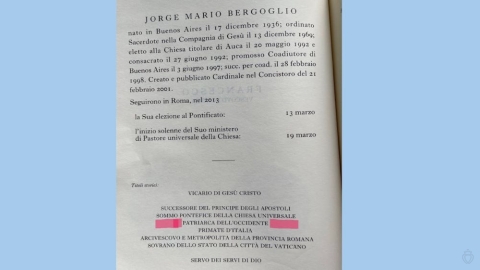Press Review: What Happened at the Synod on Synodality? (3)

The Paul VI Room where most of the Synod took place
From October 4 to 29, 2023, the Synod on Synodality was held in Rome. It was in fact the first phase of a synod which will meet again in October 2024, and which will be followed by the post-synodal exhortation of the Pope.
At the end of this first stage, we can draw some conclusions which, although provisional, are nonetheless revealing of the state of mind animating the organizers of the synod.
A Proven Praxis: Gentle Doctrinal Erosion
Jean-Marie Guénois recalled, in the article in Le Figaro already cited, that the Vatican authorities declared that we should not “expect too much from this transitional text” since this synod is spread over two years, and that the real decisions would be made at the end of 2024 by the Pope alone since a synod being only a consultative body.
This declaration in no way removes the fact that the Synod – even in its first phase – implements a proven praxis, already used in previous synods. It is always a question of not colliding head-on with traditional doctrine, but of eroding it little by little, of circumventing it “pastorally.”
Cardinal Jean-Claude Hollerich S.J., Archbishop of Luxembourg, the general rapporteur of the Synod, was not mistaken when he declared the following during a press conference on October 28, reported in the Catholic World Report: “This freedom and this openness will change the Church, and I am sure that the Church will find answers, maybe not the exact answer that this or that group wants, but answers that will make most people feel good and listened to.”
And he clarifies: “The process begins, really begins, at the end of the Synod. So next year I hope there will be a document that will be a real document, where certain theological questions about synodality, and so on, will also be taken into account. But even the final document will only be a ‘stage’ of a ‘Church on the move.’ And I think that’s what’s important: we are on the move.”
The Luxembourg prelate adds, without hiding his satisfaction: “It was clear to me that certain subjects would arouse resistance. I am very surprised that so many people voted in favor of the project. This means that the resistance was not as great as previously thought. So yes, I am happy with this result. Similar results, in a parliamentary vote, would be considered very positive.”
And Cardinal Mario Grech, Secretary General of the Synod, adds by reporting the confidence of a bishop who, during this Synod, had literally seen “the ice melt” among the people. “This is the approach of Jesus: to create spaces for everyone so that no one feels excluded. Today there was immense joy that you could see with your own eyes.”
In La Nuova Bussola Quotidiana of October 30, Stefano Fontana delivers a particularly lucid analysis of synodal praxis: “Reading the Report justifies the concerns of those who feared that the logic of this Synod would lead to radical changes that are not only pastoral but also doctrinal. Have these changes taken place?…”
“Those who, like us, predicted that this Synod session would be a process within the process, guided so as not to obstruct the way forward and to lay the groundwork for it to mature, were right. This does not mean that the revolutionary process has been abandoned, but only that it is understood as a dialectical, long, and articulated process that must be patiently managed in stages.”
“Reading the Report, one can see very well that it keeps all the doors open, not only because the task of this transitional phase was not to close them, but because there are new acquisitions on which to grow the ‘sharing’ both within the Synod participants and outside and then, only then, will some doors possibly be closed.”
“Regarding the female diaconate, for example, the Report says neither that it cannot be granted nor that it can be done. It says that ‘canon law needs to be adapted’ to ‘ensure that women can participate in decision-making processes and assume roles of responsibility in pastoral care and ministries.’”
“It then states that more creativity in the establishment of ministries is desirable, for example the ‘ministry of the Word of God’ could be established with the possibility of preaching also for women.”
“Then it calls for a new reflection on the diaconate ‘in itself’ and not only as the first phase of the priesthood, arguing that ‘a deeper reflection in this regard will also illuminate the question of women's access to the diaconate.’”
“Finally, it expressly calls for ‘theological and pastoral research on women’s access to the diaconate to continue.’ It is not said, but it lays the groundwork for it to be said in the future, thus pushing praxis to prepare the ground.”
On the constitution of the Church, Stefano Fontana rightly notes: “The need to examine the canonical implications of the proposed changes, a need that is repeatedly pointed out by the Report, tells us that the intention is to give the Church a new structure and not merely to suggest some new pastoral attitude.”
“One theme that the Report considers necessary to deepen is the theological and canonical status of the Bishops’ Conferences: ‘We consider it necessary to further deepen the doctrinal and juridical nature of the Bishops’ Conferences, recognizing the possibility of collegial action also with respect to questions of doctrine that emerge in the local sphere, thus reopening reflection on the motu proprio Apostolos suos.’”
“The Report, in fact, considers that the new synodality must promote forms of decentralization and intermediate instances. Here, too, the ground is being prepared for fundamental structural changes.”
Stefano Fontana suggests that the unanimity achieved during the final vote is due to the influence of the “facilitators” present at the Synod, according to the old methods of group dynamics: “With their vote, the synodalists overwhelmingly approved all the points of the Report. A few were against only in sensitive areas such as the female diaconate.”
“This can be explained by recalling that the work of the Synod was ‘guided’ directly and indirectly, from the appointments to the role of the ‘facilitators,’ and that the texts to be approved did indeed prepare the ground but did not expressly state so. Moreover, no critical remarks about the conciliar and post-conciliar Church ever emerged throughout the synodal discussion, so that everyone felt reassured that they were on the right track and in continuity with tradition.”
The journalist from La Nuova Bussola Quotidiana concludes: “The Synod has served to throw stones into the pond, as Francis has often expressed it, to stir the waters, to mix up the cards on the table, to sharpen contrasts without making them explode, and then to exercise a power of moderation and direction over them.…”
“The new synodality is a dialectical process, the Synod also serves to bring out tensions and contradictions, and for a Hegelian pontiff it is in this praxis that one must work to bring forth a synthesis, even if it is always open.”
Related Article:
Related Article:
(Sources : Le Figaro/Settimo Cielo/Catholic World Report/La Nuova Bussola Quotidiana/DICI n°438 – FSSPX.Actualités)
illustration : Flickr / Antonella Profeta CC BY 2.0





